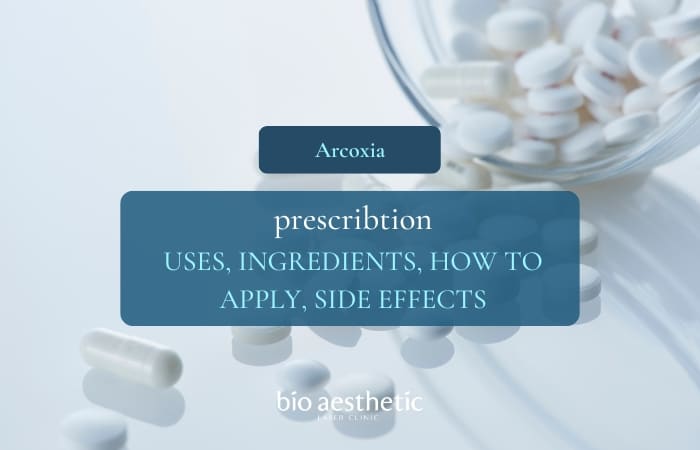COX-2 selective NSAID
30 mg • 60 mg • 90 mg • 120 mg
Important regulation: In Singapore, public advertising of prescription-only medicines is prohibited. The information below is provided for patient education, not promotion or sale.
| Aspect | What to know |
|---|---|
| What it is | Prescription COX-2 selective NSAID used for arthritis pain and short-term acute pain. |
| Main indications | Osteoarthritis (OA), Rheumatoid arthritis (RA), Ankylosing spondylitis (AS), Acute gouty arthritis, Short-term dental/acute pain. |
| Strengths | 30 mg, 60 mg, 90 mg, 120 mg tablets. |
| How to take | Once daily, with or without food; take exactly as prescribed. Use lowest effective dose for shortest duration. |
| Notable cautions | Can raise blood pressure; avoid in certain heart disease, uncontrolled hypertension, active ulcers/bleeding, severe liver/kidney disease, and late pregnancy. |
| Educational information only. Always follow your doctor’s specific instructions. | |
Dosage by condition (once daily)
| Condition | Recommended dose | Max & duration guidance |
|---|---|---|
| Osteoarthritis (OA) | 30–60 mg once daily (many labels list 60 mg). | Do not exceed 60 mg daily on some labels; use lowest effective dose. |
| Rheumatoid arthritis (RA) | 60–90 mg once daily. | Do not exceed 90 mg daily. |
| Ankylosing spondylitis (AS) | 60–90 mg once daily. | Do not exceed 90 mg daily. |
| Acute gouty arthritis | 120 mg once daily. | Max 8 days (acute period only). |
| Post-operative dental pain / acute pain | 90 mg once daily (some labels allow up to 120 mg for other acute pain). | Typically up to 3–8 days depending on label/indication. |
| Dose may be lower with liver impairment; avoid in severe hepatic disease. Your doctor will individualise. | ||
Who should avoid or be cautious
- Do not use if you have active stomach/intestinal ulcer or bleeding, severe liver disease, severe kidney disease, or if your doctor has advised against COX-2/NSAIDs due to **cardiovascular disease**.
- Blood pressure: Arcoxia can increase BP; monitoring may be required.
- Pregnancy: Avoid, especially in the third trimester. Discuss if planning pregnancy/breastfeeding. (Etoricoxib is not US-approved; refer to your Singapore prescriber.)
- Drug interactions: caution with anticoagulants, some antihypertensives, other NSAIDs, and certain diuretics—review your full medication list with your doctor.
Common side effects
Like other NSAIDs, etoricoxib may cause stomach upset, heartburn, headache, dizziness, and fluid retention.
Serious risks include GI bleeding/ulcer, blood pressure elevation, and CV events in at-risk patients. Stop and seek urgent care for chest pain, black stools, vomiting blood, sudden swelling or breathlessness.
Arcoxia vs ibuprofen, naproxen, and celecoxib
| Feature | Arcoxia (etoricoxib) | Ibuprofen / Naproxen (non-selective) | Celecoxib (celecoxib) |
|---|---|---|---|
| COX selectivity | COX-2 selective | COX-1 & COX-2 | COX-2 selective |
| Dosing frequency | Usually once daily | 2–3 times daily (varies) | Once or twice daily |
| GI irritation risk | Generally lower vs non-selective NSAIDs, but still possible | Higher GI risk vs COX-2 selective | Lower vs non-selective; still possible |
| CV risk considerations | CV risk warnings apply; avoid in certain heart conditions | CV risk warnings also apply | CV risk warnings also apply |
| Notes | Not FDA-approved in the US; available in SG and other regions. | OTC in many countries at low doses | Prescription only |
| Choice depends on your history (GI/CV risk, BP, kidneys, other meds). Your doctor will individualise therapy. | |||
Quick FAQs
What is Arcoxia used for?
OA, RA, AS, acute gout and short-term acute pain including dental pain.
What are the usual Arcoxia doses?
OA: 30–60 mg daily (many labels 60 mg); RA/AS: 60–90 mg daily; acute gout: 120 mg daily (max 8 days); dental pain: 90 mg daily (short course).
Is Arcoxia safe?
Effective when used appropriately, but all NSAIDs carry GI/CV risks. Not for everyone—especially those with certain heart, stomach, liver or kidney problems, or in late pregnancy.
Arcoxia vs ibuprofen/celecoxib—what’s better?
No single “best” option. Etoricoxib is COX-2 selective and usually once daily; your doctor chooses based on your risk profile and response.
Can I drink alcohol on Arcoxia?
Alcohol can increase GI risk with NSAIDs. If you drink, keep it light and discuss with your doctor.
Related services & useful pages
Regulatory note (Singapore): Public advertising of prescription-only medicines is prohibited. This page is for general education only and does not sell or promote Arcoxia. For personalised medical advice, please consult a licensed doctor.
References
- Medsafe NZ. Arcoxia Consumer Medicine Information — indications & dosing.
- HPRA (EU). Etoricoxib SmPC — dosing incl. gout (max 8 days) & dental pain.
- EMC (UK). Etoricoxib SmPC — dose limits for OA/RA/AS; PIL — patient warnings.
- Patient.info. Etoricoxib for pain & inflammation — strengths & typical use.
- HSA Singapore. Advertisements of therapeutic products — POM public advertising prohibition.
- MOH Singapore (HCSA Ads FAQ). Healthcare Services (Advertisement) Regulations FAQ.
- Drugs.com. Arcoxia overview — dosing by indication; note US non-approval.



















